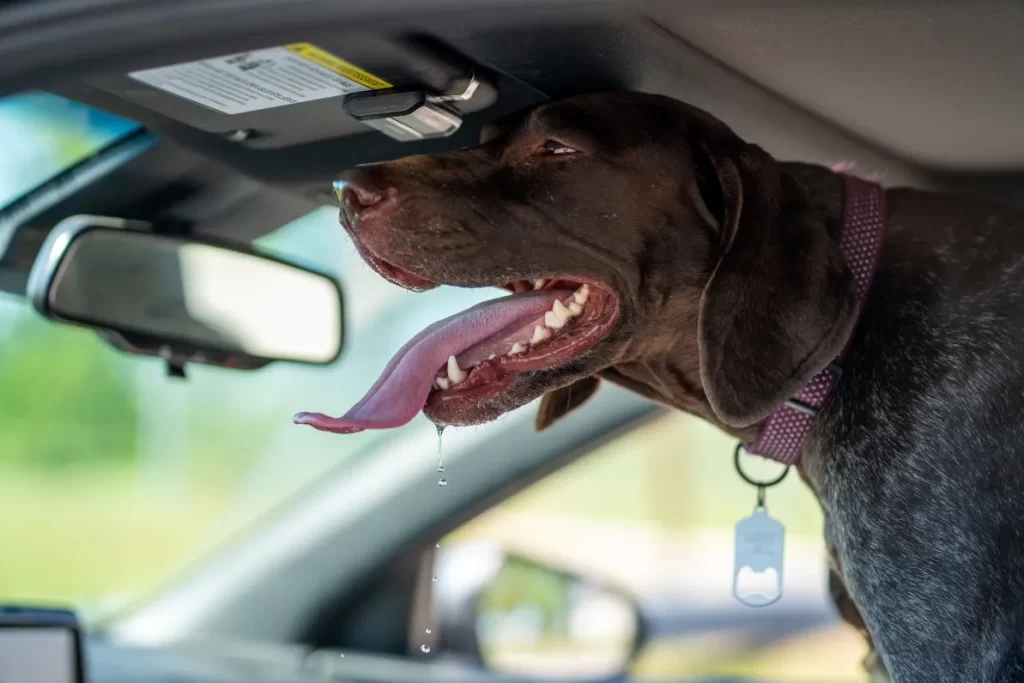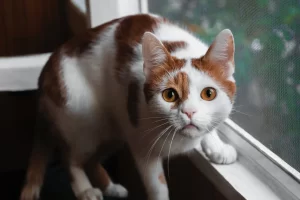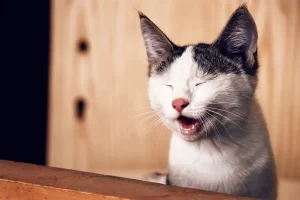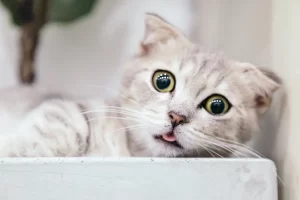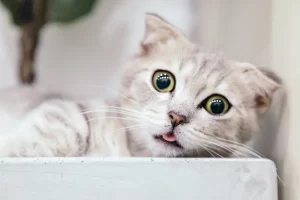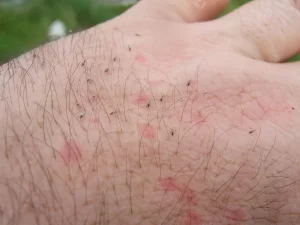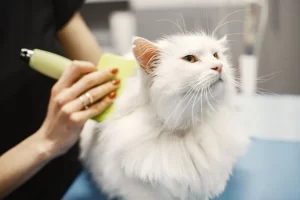Excessive drooling in dogs can be a frustrating issue for pet owners to manage. While there are several medical treatments and medications available, some pet owners prefer to explore more natural solutions. Home remedies for dog drooling can be a safe and effective way to manage the issue without relying on harsh chemicals or medications. From dietary changes to alternative therapies, there are several home remedies that can help reduce drooling in dogs. In this article, we will explore some of the most effective home remedies for managing drooling in dogs and provide tips for keeping your pet comfortable and healthy.
If you prefer to listen on-the-go, be sure to check out the audio version of this blog below!
Table of Contents
ToggleWhat is dog drooling?
Dog drooling is the natural process by which dogs produce saliva in their mouths to aid in digestion and keep their mouths clean. Some amount of drooling in dogs is normal, and many dogs will drool when they are anticipating food, feeling nauseous, or experiencing excitement. However, excessive drooling can be a sign of an underlying health issue or discomfort, and may require medical attention. Additionally, some breeds of dogs, such as Saint Bernards and Bloodhounds, are known to drool more than others due to the shape of their jowls and mouths.
Causes of excessive drooling in dogs
There are several potential causes of excessive drooling in dogs. Some of the most common causes include:
- Dental issues: Dental problems, such as gum disease, tooth decay, or a foreign object stuck in the teeth or gums, can cause your dog to drool excessively.
- Nausea: Dogs may drool excessively if they are feeling nauseous or have an upset stomach. This can be caused by a variety of factors, such as eating something they shouldn’t have or an underlying health condition.
- Heat stroke: When dogs become overheated, they may start to drool excessively as a way to cool down.
- Motion sickness: Dogs can experience motion sickness, especially during car rides, which can cause excessive drooling.
- Poisoning: Certain toxins, such as insecticides or household cleaning products, can cause your dog to drool excessively.
- Anxiety: Dogs that are feeling anxious or stressed may drool excessively as a symptom of their anxiety.
- Dental abnormalities: Some breeds, such as Boxers, may have a genetic predisposition to dental abnormalities that can cause excessive drooling.
- Oral infections: Infections in the mouth or throat can cause your dog to drool excessively, along with other symptoms such as bad breath or difficulty eating.
- Injuries: Injuries to the mouth, throat, or tongue can cause your dog to drool excessively as their body tries to heal the affected area.
- Breathing difficulties: Breathing difficulties, such as those caused by allergies or respiratory infections, can cause your dog to drool excessively.
It’s important to note that excessive drooling can be a symptom of a more serious underlying health issue, such as liver or kidney disease, so it’s important to consult with your veterinarian if your dog is drooling excessively or exhibiting any other unusual symptoms.
Dog drooling: When to be concerned
Excessive drooling in dogs can be a normal occurrence, but there are certain situations where you should be concerned and seek veterinary care for your pet. Some of the situations where you should be concerned about your dog’s drooling include:
- Abnormal drooling: If your dog suddenly starts drooling more than usual or begins drooling when they normally don’t, this could be a sign of an underlying issue.
- Other symptoms: If your dog is drooling excessively and also displaying other symptoms such as vomiting, diarrhea, lethargy, or loss of appetite, it could be an indication of a more serious problem.
- Difficulty eating or drinking: If your dog is drooling excessively and also having difficulty eating or drinking, it could be a sign of dental or oral issues, or even a foreign object stuck in their mouth.
- Visible injuries: If your dog is drooling excessively and has visible injuries to their mouth, such as cuts or bleeding, it could be an indication of a serious injury.
- Persistent drooling: If your dog has been drooling excessively for more than a few hours, it could be a sign of a more serious issue and veterinary care should be sought.
- Breed predispositions: Some breeds of dogs are more prone to excessive drooling due to the shape of their mouth or the amount of skin around their jowls. While this may not be a cause for concern, it’s important to monitor your dog’s drooling habits and seek veterinary care if it becomes excessive or abnormal.
Diagnosing dog drooling: A guide
Diagnosing the cause of your dog’s drooling will depend on several factors, such as the duration and severity of the drooling, other symptoms your dog may be experiencing, and your dog’s medical history. Here are some steps that your veterinarian may take to diagnose the cause of your dog’s drooling:
- Physical examination: The first step in diagnosing the cause of your dog’s drooling will likely be a physical examination. Your veterinarian will examine your dog’s mouth, throat, and teeth for any signs of abnormalities or injuries.
- Medical history: Your veterinarian will ask you about your dog’s medical history, including any previous health issues or treatments. They may also ask about your dog’s diet, exercise habits, and any recent changes to their routine.
- Diagnostic tests: Depending on the results of the physical examination and medical history, your veterinarian may recommend diagnostic tests to help diagnose the cause of your dog’s drooling. These may include blood tests, X-rays, or ultrasounds.
- Oral examination: If the cause of your dog’s drooling is suspected to be related to dental issues, your veterinarian may recommend an oral examination under anesthesia. This will allow them to thoroughly examine your dog’s teeth and gums for any signs of decay, disease, or foreign objects.
- Allergy testing: If your dog’s drooling is suspected to be related to allergies, your veterinarian may recommend allergy testing to identify the specific allergen that is causing the reaction.
- Biopsy: In some cases, a biopsy of the affected area may be necessary to diagnose the cause of your dog’s drooling. This is typically done under anesthesia and involves taking a small sample of tissue from the affected area for examination.
Overall, the key to diagnosing the cause of your dog’s drooling is to work closely with your veterinarian and provide them with as much information as possible about your dog’s symptoms and medical history. How often should you take your dog to the vet? read all about vet visits here.
Home remedies for dog drooling
Home remedies can be helpful in managing your dog’s drooling, but it’s important to keep in mind that they should not replace veterinary care and advice. Here are some home remedies that may help reduce your dog’s drooling:
- Dental hygiene: Good dental hygiene is essential in managing your dog’s drooling. Brushing your dog’s teeth regularly and providing dental chews or toys can help keep their teeth clean and prevent dental issues that can cause drooling.
- Adjusting their diet: Certain foods or treats can trigger excessive drooling in some dogs. Talk to your veterinarian about adjusting your dog’s diet to eliminate any potential triggers.
- Use a bandana or bib: A bandana or bib can help catch your dog’s drool and prevent it from getting on your furniture or clothing.
- Elevating food and water bowls: If your dog is drooling excessively due to an oral or dental issue, elevating their food and water bowls can make it easier for them to eat and drink without drooling excessively.
- Herbal remedies: Some herbs, such as ginger and chamomile, may have anti-inflammatory properties and can help reduce your dog’s drooling. However, it’s important to talk to your veterinarian before giving your dog any herbal remedies.
- Clean their face regularly: Regularly wiping your dog’s face with a damp cloth can help keep their face clean and dry, reducing the amount of drooling.
- Treat underlying medical conditions: If your dog’s drooling is caused by an underlying medical condition, such as an infection or allergy, treating the underlying condition can help reduce their drooling.
Natural remedies for dog drooling
Using herbs and natural supplements can be a helpful way to manage your dog’s drooling, but it’s important to talk to your veterinarian before giving your dog any new supplements or remedies. Here are some herbs and natural supplements that may help reduce your dog’s drooling and their instructions:
- Ginger: Ginger is a natural anti-inflammatory and can help reduce inflammation in your dog’s mouth and throat that may be causing excessive drooling. You can add fresh ginger root or ginger powder to your dog’s food or give them ginger supplements as directed by your veterinarian.
- Chamomile: Chamomile is a natural anti-inflammatory and can help reduce inflammation in your dog’s mouth and throat. It also has a calming effect and may help reduce stress-related drooling. You can make chamomile tea and add it to your dog’s water or give your dog chamomile supplements as directed by your veterinarian.
- Slippery elm: Slippery elm is a natural demulcent and can help soothe and protect the mucous membranes in your dog’s mouth and throat. This can help reduce drooling caused by inflammation or irritation. You can give your dog slippery elm supplements or mix slippery elm powder with water and add it to their food.
- Turmeric: Turmeric is a natural anti-inflammatory and can help reduce inflammation in your dog’s mouth and throat. It also has antioxidant properties and can help support your dog’s overall health. You can add turmeric powder to your dog’s food or give them turmeric supplements as directed by your veterinarian.
- Coconut oil: Coconut oil is a natural anti-inflammatory and can help reduce inflammation in your dog’s mouth and throat. It can also help improve their digestion and coat health. You can add coconut oil to your dog’s food or give it to them as a supplement. The recommended dosage is usually 1 teaspoon per 10 pounds of body weight, but it’s important to check with your veterinarian for the correct dosage for your dog.
- Milk Thistle: Milk thistle is a natural herb that can help improve liver function and support your dog’s immune system. It can also help reduce inflammation and toxins in the body that may be causing excessive drooling. You can give your dog milk thistle supplements as directed by your veterinarian.
- Vitamin E: Vitamin E is a natural antioxidant that can help reduce inflammation and support your dog’s overall health. It may also help reduce drooling caused by allergies or other underlying health conditions. You can give your dog vitamin E supplements or add vitamin E-rich foods to their diet, such as almonds or sunflower seeds.
- Probiotics: Probiotics are beneficial bacteria that can help improve your dog’s digestive health and reduce inflammation throughout the body. This may help reduce drooling caused by digestive issues or food sensitivities. You can give your dog probiotic supplements or add probiotic-rich foods to their diet, such as plain yogurt or kefir. It’s important to talk to your veterinarian before giving your dog any new supplements or remedies to ensure that they are safe and appropriate for your dog’s specific needs.
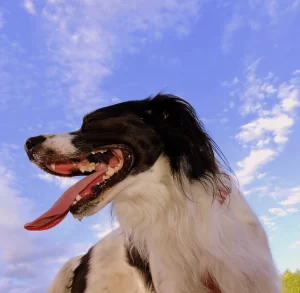
Reducing dog drooling with a natural diet
Creating a natural diet for your dog can help reduce drooling and improve their overall health. Here are some options to consider:
- Raw food diet: A raw food diet consists of raw meat, fruits, and vegetables. This type of diet is high in protein and low in carbohydrates, which can help reduce drooling caused by digestive issues or food sensitivities. Some examples of raw foods that you can include in your dog’s diet are raw meat (beef, chicken, or turkey), raw eggs, and raw vegetables (carrots, spinach, or broccoli).
- Homemade cooked diet: A homemade cooked diet consists of cooked meat, grains, and vegetables. This type of diet is easy to prepare and can be tailored to your dog’s specific nutritional needs. Some examples of cooked foods that you can include in your dog’s diet are cooked chicken, brown rice, and green beans.
- Limited ingredient diet: A limited ingredient diet consists of a limited number of ingredients to reduce the risk of allergic reactions or food sensitivities. Some examples of limited-ingredient foods that you can include in your dog’s diet are duck and sweet potato or salmon and peas.
- Grain-free diet: A grain-free diet consists of protein sources such as meat, fish, and eggs, along with vegetables and fruits, but does not contain grains such as wheat, corn, or rice. This type of diet can be beneficial for dogs with food allergies or sensitivities. Some examples of grain-free foods that you can include in your dog’s diet are salmon and sweet potato or chicken and vegetables.
- Homemade bone broth: Bone broth is a nutrient-rich food that can help reduce inflammation and improve digestion. You can make homemade bone broth by boiling bones (chicken, beef, or turkey) with vegetables (carrots, celery, or parsley) and water for several hours. You can add bone broth to your dog’s food or give it to them as a treat.
Acupuncture and acupressure for dog drooling management
Acupuncture and acupressure are alternative therapies that can help manage drooling in dogs. Here’s how they work:
Acupuncture involves inserting thin needles into specific points on your dog’s body to stimulate the nervous system and promote healing. In Traditional Chinese Medicine, excessive drooling is thought to be caused by an imbalance of energy in the body, and acupuncture can help restore this balance. Acupuncture can also help reduce inflammation and improve digestive function, which can contribute to drooling. It’s important to have a qualified veterinary acupuncturist perform acupuncture on your dog.
Acupressure involves applying pressure to specific points on your dog’s body to stimulate healing. Like acupuncture, acupressure can help balance the energy in your dog’s body and reduce inflammation. Acupressure can also help improve digestion and promote relaxation, which can reduce drooling caused by stress or anxiety. You can learn how to perform acupressure on your dog by taking a class or working with a certified acupressure practitioner.
While acupuncture and acupressure can be effective in managing drooling in dogs, they should not be used as a substitute for veterinary care.
Medical treatments and medications
Medical treatments, medications, and over-the-counter (OTC) medicines can be used to manage drooling in dogs. Here are some options:
- Botox injections: Botox is a medication that can be injected into the salivary glands to reduce saliva production. This treatment is typically reserved for severe cases of drooling that don’t respond to other treatments.
- Anticholinergic drugs: Anticholinergic drugs such as glycopyrrolate and atropine can be used to reduce saliva production. These medications work by blocking the effects of acetylcholine, a neurotransmitter that stimulates saliva production.
- Anti-nausea medication: If drooling is caused by nausea, anti-nausea medication such as metoclopramide or ondansetron may be prescribed. These medications work by blocking the signals that trigger nausea and vomiting.
- Antibiotics: If drooling is caused by a bacterial infection, antibiotics may be prescribed to treat the infection and reduce drooling.
- Dental treatment: If drooling is caused by dental issues such as gum disease or tooth decay, dental treatment such as a dental cleaning, tooth extraction, or gum surgery may be necessary to reduce drooling.
- OTC remedies: There are also OTC remedies such as mouthwash, dental chews, or natural supplements that can help reduce drooling caused by dental issues or mild digestive issues. However, it’s important to talk to your veterinarian before giving your dog any OTC remedies to ensure they are safe and effective.
Note that medications and medical treatments should only be used under the guidance of a veterinarian. Some medications may have side effects or interactions with other medications, and it’s important to follow your veterinarian’s instructions carefully to ensure your dog’s safety and well-being.
Preventing dog drooling in stressful situations
Drooling in dogs during car rides and other stressful situations can be prevented or reduced by taking some measures. Here are some ways to prevent drooling in dogs during car rides and other stressful situations:
- Gradual exposure: Gradual exposure to the car and the experience of riding in it can help your dog become accustomed to it and reduce stress.
- Familiarity: Encouraging your dog to spend time in the car when it’s stationary and with the engine turned off can help them feel more comfortable in the car.
- Comfort: Making your dog as comfortable as possible during the ride by providing soft bedding, opening the windows slightly for fresh air, and playing calming music can help reduce stress.
- Short trips: Starting with short trips and gradually increasing the duration can help your dog become more comfortable with car rides.
- Medication: In some cases, medication may be necessary to help your dog feel more relaxed during car rides. Your veterinarian may recommend anti-anxiety medication or other medications to help manage stress and reduce drooling.
Remember that prevention is key, and taking these measures can help reduce stress and prevent drooling in dogs during car rides and other stressful situations.
Alternative therapies for dog drooling treatment
Alternative therapies such as chiropractic and massage can be used to treat drooling in dogs. Here’s how:
- Chiropractic therapy: Chiropractic therapy involves the use of manual adjustments to the spine and joints to improve mobility, reduce pain, and promote healing. Chiropractic therapy can be used to treat underlying issues such as nerve impingement or spinal misalignments that may be contributing to drooling.
- Massage therapy: Massage therapy involves the manipulation of soft tissues to promote relaxation, relieve pain, and improve circulation. Massage therapy can be used to reduce stress and promote healing in dogs that are experiencing drooling due to underlying health issues or stress.
- Acupressure: Acupressure involves the application of pressure to specific points on the body to promote healing and balance. Acupressure can be used to treat underlying issues that may be causing droolings, such as gastrointestinal issues or stress.

